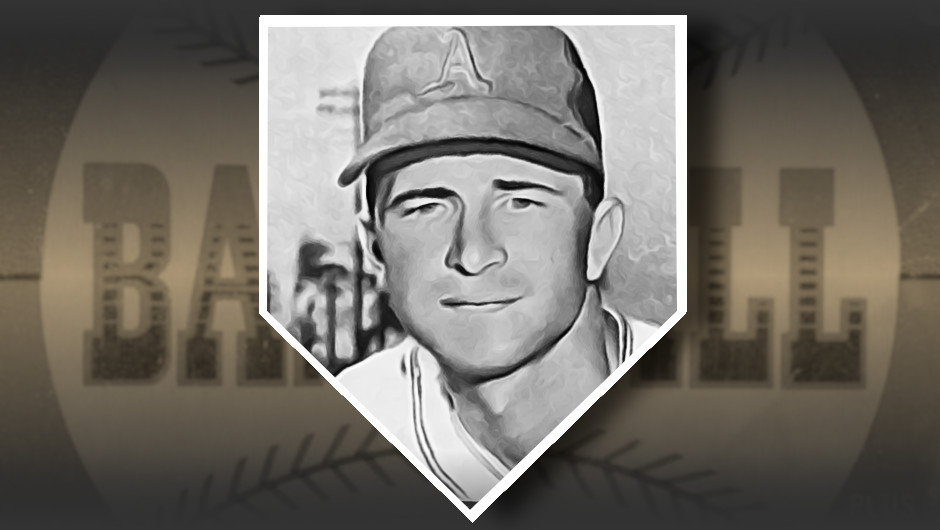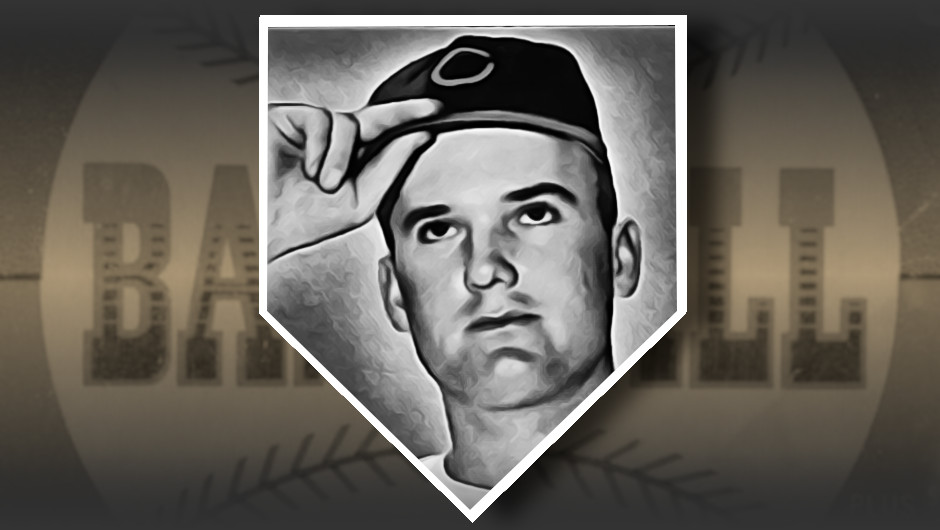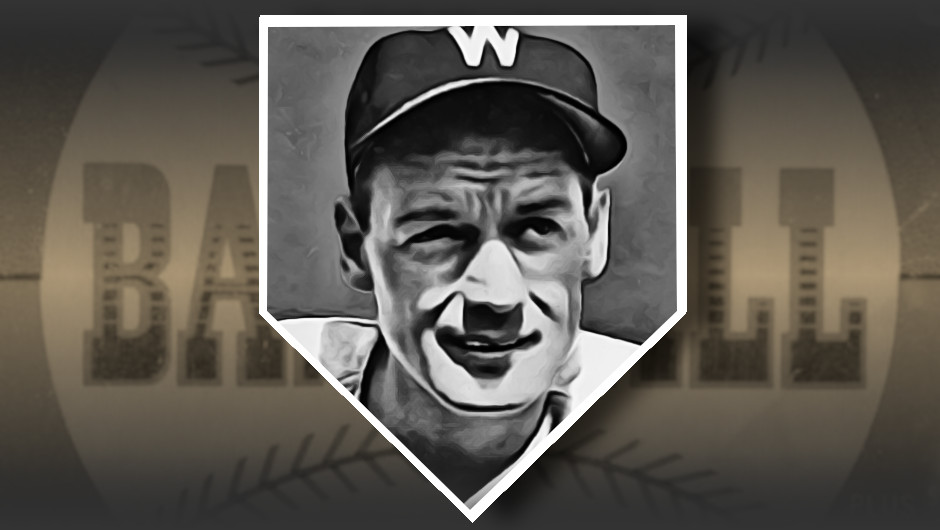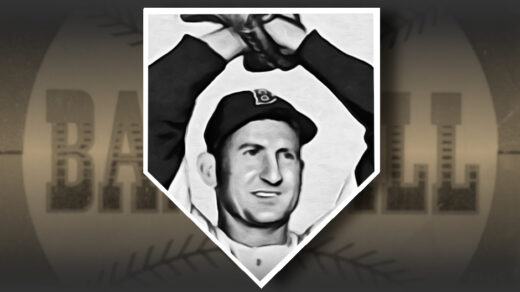Breaking into Major League Baseball in 1940, the Washington Senators’ Sid Hudson never got to pitch to Babe Ruth. He did, however, do all he could to shut down the Yankees in Ruth’s final Yankee Stadium appearance. Ruth was the guest of honor at the Yankees’ 1947 Babe Ruth Day and gave a farewell address to his fans before the game. Hudson took the mound for Washington and proceeded to pitch a complete game shutout. Not known for offense, the Senators only scored one run in the victory. The runner that crossed the plate was nonother than Hudson who had put himself on the bases with a single.

Hudson’s performance mirrored some of the success he had seen in his rookie season, a surprise given the arm troubling he had developed following WW2. By the time he appeared in the 1952 Topps set he had reinvented his delivery with a new sidearm motion. His cards had not had much chance to circulate among Washington fans before he was traded to the Boston Red Sox mid-season. He soon moved to the bullpen and played for another two seasons in Boston before being cut at the outset of 1955.
After leaving Boston he coached professional and college teams for more than three decades. His Wikipedia entry lists his profession as “baseball coach” rather than player or pitcher, a testament to where he made his biggest impact.
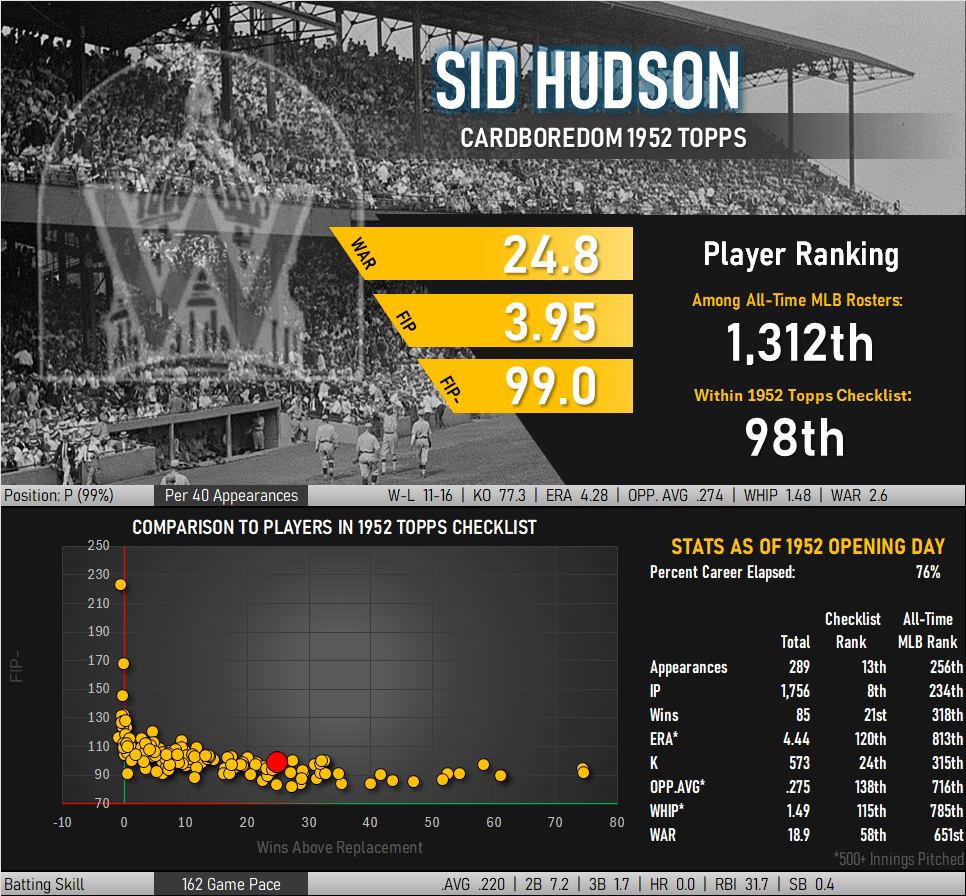
Another Interesting Sid Hudson Card
Hudson’s link to pre-war baseball goes beyond just facing the Yankees with Babe Ruth in attendance. He broke into the Washington pitching rotation in 1940 and quickly racked up 17 wins and a trio of shutouts. This output put him on the radar of baseball card publishers and resulted in the young pitcher having a rookie card issued in the same set as Pee Wee Reese and Dom DiMaggio. Hudson appears as card #46 in the 1941 edition of Play Ball.
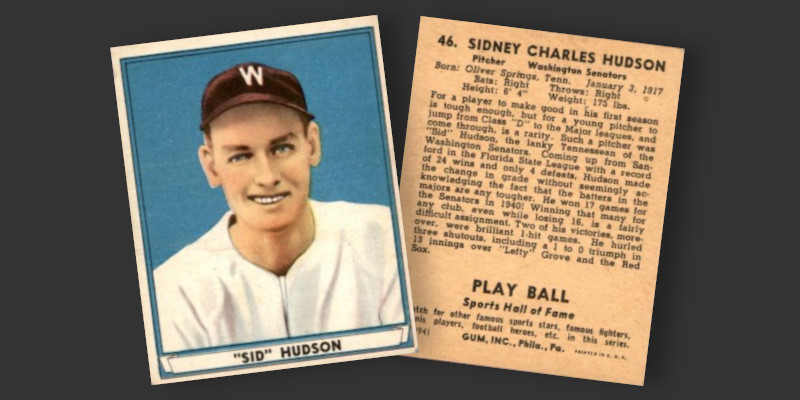
1941 marked the third consecutive year of baseball cards from Gum, Inc. and the first to feature colorized photography. An industry-wide curtailment of gum sales stopped the Play Ball series, though not before a paper-based copy of the 1941 set was released to mark the 1942 season. The Play Ball brand disappeared during the war years but its cards returned in force in 1948 newly renamed as Bowman.


